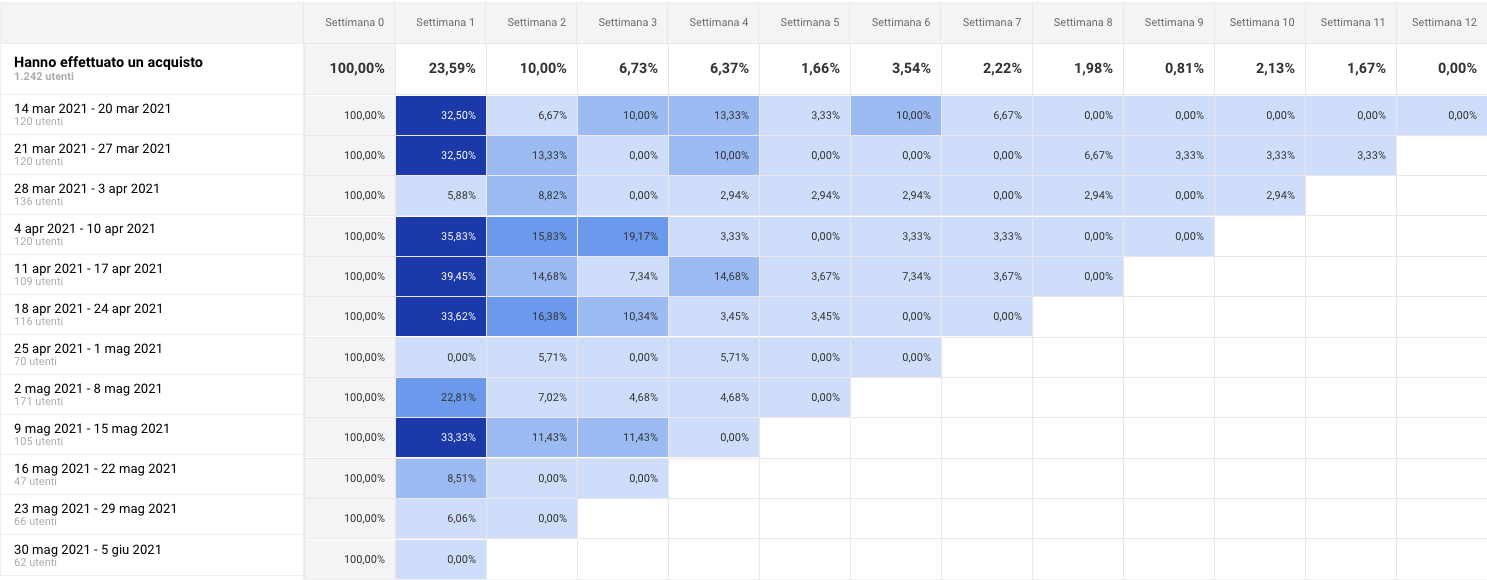Introduction to Customer Segmentation
Customer segmentation is a crucial aspect of any successful marketing strategy. By dividing your customer base into distinct groups based on their characteristics, behaviors, and preferences, you can effectively tailor your marketing efforts to target each segment. This allows you to deliver personalized messages and offers, leading to higher conversion rates and customer satisfaction.
Why is Customer Segmentation Important?
Customer segmentation is important for several reasons. Firstly, it helps you gain a deeper understanding of your customers. By analyzing their demographics, psychographics, and purchase history, you can identify patterns and trends that enable you to make more informed marketing decisions. Secondly, customer segmentation allows you to allocate your resources more efficiently. Instead of adopting a one-size-fits-all approach, you can focus on the most profitable customer segments, maximizing your return on investment. Lastly, customer segmentation helps you build stronger relationships with your customers. By delivering personalized experiences, you can enhance customer loyalty and satisfaction.
Understanding Customer Segmentation
Customer segmentation involves dividing your customer base into homogeneous groups based on specific criteria. The criteria can vary depending on your business and marketing goals.
Some common segmentation variables include demographics (e.g., age, gender, income), psychographics (e.g., interests, values, lifestyle), and behavior (e.g., purchase history, engagement with your brand). By combining these variables, you can create a comprehensive picture of your customers and identify distinct segments that exhibit similar characteristics.
Different Types of Customer Segmentation Strategies
You can utilise various customer segmentation strategies to target your audience effectively. Let's explore some of the most common ones:
1. Demographic Segmentation
Demographic segmentation involves dividing your customers based on demographic variables such as age, gender, income, and education. This strategy is useful for businesses that offer products or services that cater to specific age groups or genders. For example, a skincare brand may target female customers aged 25-35 with products tailored to their skincare needs.
2. Psychographic Segmentation
Psychographic segmentation focuses on customers' lifestyles, interests, values, and opinions. This strategy helps you understand the motivations and preferences of your customers on a deeper level. By targeting specific psychographic segments, you can create marketing messages that resonate with their unique aspirations and beliefs. For instance, a fitness brand may target health-conscious individuals who value sustainability and eco-friendly practices.
3. Behavioral Segmentation
Behavioral segmentation involves segmenting customers based on their interactions and behaviors towards your brand. This strategy helps you understand how customers engage with your products or services, their purchase history, and their loyalty. By identifying high-value customers or frequent buyers, you can tailor your marketing efforts to encourage repeat purchases and foster brand loyalty.
RFM Customer Segmentation Model
The RFM (Recency, Frequency, Monetary) customer segmentation model is a powerful tool that helps businesses identify their most valuable customers. This model analyzes three key factors:
1. Recency
Recency refers to how recently a customer has made a purchase. Customers who have made recent purchases are more likely to be engaged with your brand and open to future offers.
2. Frequency
Frequency measures how often a customer makes purchases. Customers who make frequent purchases demonstrate higher loyalty and engagement with your brand.
3. Monetary
Monetary represents the amount a customer has spent on your products or services. Customers with higher monetary values are more likely to be profitable and contribute to your business's revenue.
By combining these three factors, you can categorize customers into segments: high-value customers, loyal customers, potential churners, and inactive customers. This segmentation allows you to tailor your marketing efforts to each segment's needs and behaviors.
👉 Below the link to the article where I explain how to segment your customer base using with Google Sheets:

Conducting Customer Segmentation Analysis
To conduct a customer segmentation analysis, you must gather relevant customer data. This can include demographic information, purchase history, website interactions, and customer feedback. Once you have collected the necessary data, you can use various analytical tools and techniques to identify meaningful segments within your customer base. These tools can range from simple spreadsheet software to more advanced data analytics platforms.
When conducting the analysis, it's essential to ensure the accuracy and validity of the data. Clean and reliable data will yield more accurate segmentation results. Additionally, regularly updating and refreshing your customer segmentation analysis is crucial as customer behaviors and preferences may change over time.
Benefits of Customer Segmentation
Implementing customer segmentation in your marketing strategy offers several benefits:
1. Improved Personalization
By targeting specific customer segments, you can deliver personalized messages, offers, and experiences. This personalization enhances customer satisfaction and increases the likelihood of conversion.
2. Enhanced Customer Retention
Understanding your customers' needs and preferences allows you to address their pain points and provide tailored solutions. This strengthens customer loyalty and reduces churn rates.
3. Increased ROI
By allocating your marketing resources to the most profitable customer segments, you can optimize your marketing budget and achieve a higher return on investment.
4. Better Customer Insights
Customer segmentation provides valuable insights into your customers' behaviors and preferences. This knowledge can inform your product development, marketing campaigns, and overall business strategy.
Implementing Customer Segmentation in Your Marketing Strategy
To implement customer segmentation effectively, follow these steps:
1. Define Your Marketing Objectives
Clearly define your marketing objectives and goals. Determine what you want to achieve with your segmentation efforts, such as increasing sales, improving customer satisfaction, or expanding into new markets.
2. Gather Relevant Data
Collect relevant customer data, including demographics, purchase history, website interactions, and customer feedback. Ensure the data is accurate, reliable, and comprehensive.
3. Identify Segmentation Variables
Identify the variables you will use to segment your customer base. These variables can include demographics, psychographics, behavior, or a combination of these factors.
4. Analyze and Segment Your Customers
Use analytical tools and techniques to analyze your data and identify meaningful customer segments. Group your customers based on shared characteristics and behaviors.
5. Develop Segment-Specific Marketing Strategies
Once you have identified your customer segments, develop marketing strategies tailored to each segment's unique needs and preferences. Craft personalized messages, offers, and experiences that resonate with each segment.
6. Test and Refine
Continuously test and refine your segmentation strategies. Monitor the performance of your marketing campaigns and make adjustments as needed to improve results.
Best Practices for Customer Segmentation
To achieve optimal results with customer segmentation, keep these best practices in mind:
1. Start with Clear Goals
Define clear goals for your customer segmentation efforts. Align your segmentation strategy with your overall business objectives to ensure consistency and effectiveness.
2. Use Multiple Variables
Consider using multiple segmentation variables to create more refined and accurate customer segments. Combining demographics, psychographics, and behavior can provide a more comprehensive view of your customers.
3. Regularly Update Your Segmentation
Customer behaviors and preferences change over time. Regularly update and refresh your segmentation to ensure it remains relevant and effective.
4. Integrate Segmentation into Your Marketing Automation
Integrate your segmentation strategy into your marketing automation tools and systems. This allows you to deliver personalized messages and offers at scale, maximizing efficiency and impact.
Tools and Resources for Customer Segmentation Analysis
Several tools and resources can assist you in conducting customer segmentation analysis:
1. Customer Relationship Management (CRM) Software
CRM software, such as Salesforce or HubSpot, can help you collect and organize customer data, enabling you to segment your customers more effectively.
Recommended:
- Attio
2. Data Analytics Platforms
Data analytics platforms like Google Analytics or Tableau provide robust analytical capabilities, allowing you to analyze customer data and identify meaningful segments.
Recommended:
- Keboola
- Google Cloud Platform
3. Survey Tools
Survey tools like SurveyMonkey or Typeform enable you to gather customer feedback and insights, which can inform your segmentation analysis.
Recommended:
- Lyssna
- Gartner online tool for survey
4. Customer Journey Mapping Tools
Customer journey mapping tools, such as UXPressia or Canvanizer, help you visualize your customers' interactions and touchpoints, aiding in segmentation analysis.
Recommended:
- Google Analytics
- User

Unlocking the Power of Customer Segmentation
Customer segmentation is a powerful tool for targeted marketing. By dividing your customer base into distinct segments based on their characteristics and behaviours, you can deliver personalized experiences and messages that resonate with each segment.

Implementing customer segmentation in your marketing strategy offers numerous benefits, including improved personalization, enhanced customer retention, and increased return on investment.
By following best practices and utilizing the right tools and resources, you can unlock the power of customer segmentation and drive your business towards success.

Unlock the power of customer segmentation and take your marketing to the next level. Start implementing customer segmentation strategies today and witness the impact on your business's growth and profitability.

